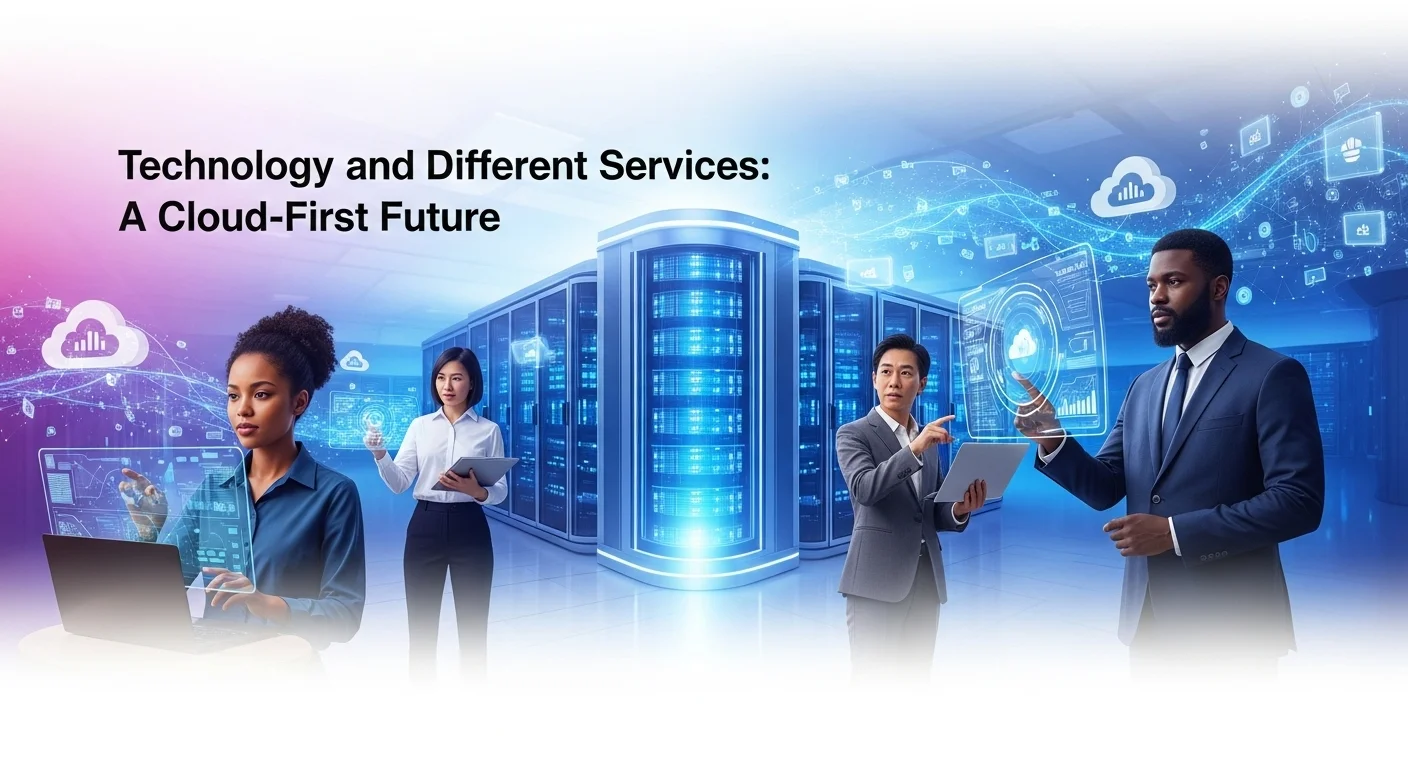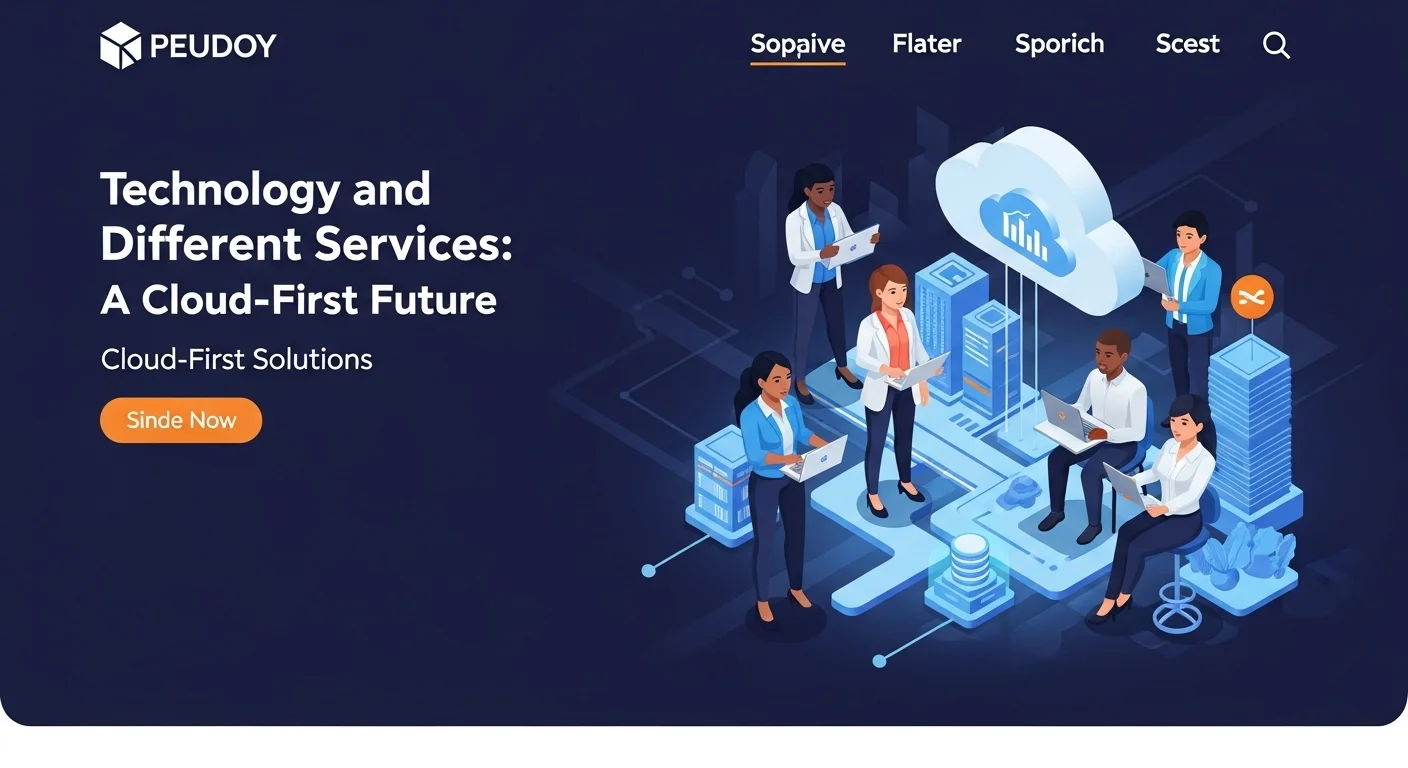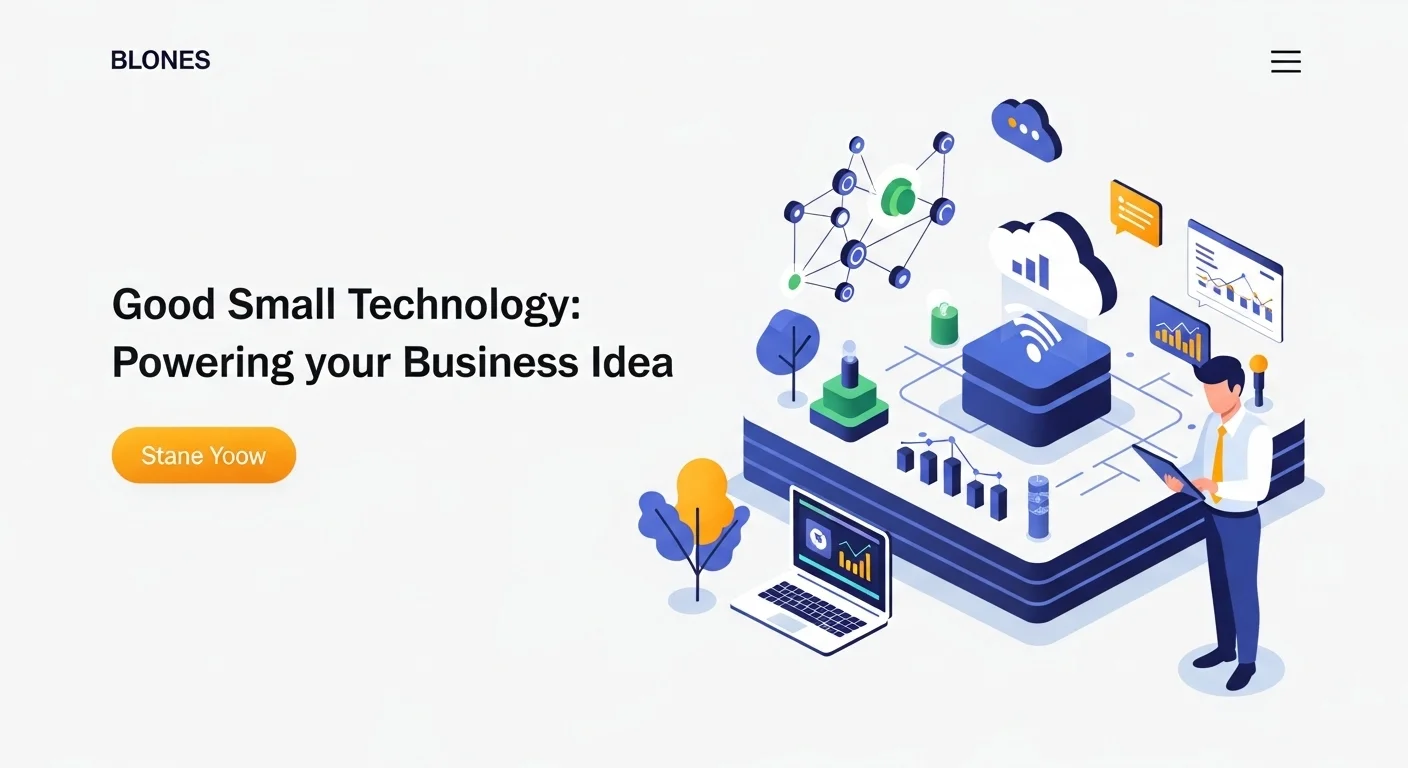Everything as a Service: Navigating the Cloud-First Future of Technology

Executive Summary
In my years in tech, I've seen one major shift define success: moving from buying products to using services. This change is all about agility and innovation, and it's powered almost entirely by the cloud. In this article, I'll walk you through the core concepts, cutting through the jargon. We'll explore the main cloud models—IaaS, PaaS, and SaaS—to give you a real-world understanding of how they work. We'll also touch on how choosing the right mix of services from providers can completely transform your business, and how this foundation supports other game-changers like Cybersecurity and AI as a Service. This guide is for anyone, from business leaders to tech enthusiasts, who wants to genuinely understand and leverage the power of cloud services for real-world growth.
Table of Contents
Table of Contents
What is the 'As-a-Service' Model and Why Does It Matter?
If you've been in the tech world for a while, you've witnessed a massive shift. We've moved away from the old model of buying physical hardware and software licenses that last forever. Today, everything is about a service-oriented approach, where we access what we need on-demand over the internet. This isn't just a new way to buy things; it's a completely different way of thinking about business strategy, efficiency, and innovation. At the very center of this revolution is cloud computing. I can't overstate how important this model is. It gives companies the scalability and flexibility they need to compete today. Understanding how these services work, especially the different cloud models, isn't just a good idea anymore—it's essential for survival and growth.
The foundation of this service-based world is built on a few key cloud computing models. Think of them as layers in a stack, where each one offers a different level of control and management. The three you'll hear about most are Infrastructure as a Service (IaaS), Platform as a Service (PaaS), and Software as a Service (SaaS). Getting a handle on these is the first step for any organization looking to make a real digital transformation. IaaS gives you the raw building blocks of IT—servers, storage, and networking—that you rent instead of buy. This gives you the most control, letting you manage your own operating systems and applications without the huge upfront cost of hardware. I like to explain it as leasing a plot of land where you can build whatever you want. When companies compare cloud providers, they're often looking at the raw power and pricing of their IaaS offerings.
Moving up a layer, we find Platform as a Service (PaaS). PaaS gives developers a complete environment to build, test, and run applications without ever having to worry about the underlying servers or operating systems. It’s like renting a fully equipped workshop; all the tools and machinery are there for you, so you can just focus on creating your product. This lets development teams concentrate on writing code and innovating, which drastically speeds up how quickly new applications can be released. The quality of a provider's PaaS solution is often a key factor for businesses that want to move fast.
At the top of the stack is Software as a Service (SaaS), the model most of us use every day. SaaS delivers ready-to-use software applications over the internet, usually on a subscription basis. Think about Gmail, Microsoft 365, or Salesforce. You just log in through a web browser, and the provider handles all the infrastructure, maintenance, and updates behind the scenes. SaaS has been a game-changer, giving small businesses access to powerful tools that were once only affordable for large corporations. When a company decides to adopt a new SaaS tool, they're usually thinking about how well it fits into their existing way of doing business.
But it doesn't stop there. The world of cloud services is always evolving. For instance, Function as a Service (FaaS), or 'serverless' computing, lets developers run code in response to specific events without managing any servers at all. It's incredibly efficient because you only pay for the exact compute time you use. Another growing area is Containers as a Service (CaaS), which uses technologies like Docker and Kubernetes. It's a middle ground between IaaS and PaaS, offering the portability of containers without the headache of managing the underlying machines. These newer models show how dynamic the cloud is, with providers constantly creating more specialized and efficient solutions.
The impact of this 'as-a-service' approach goes far beyond IT. It’s a direct catalyst for business agility. The ability to launch new infrastructure in minutes (IaaS), deploy an application in hours (PaaS), or access a new tool instantly (SaaS) lets companies experiment and scale at an unbelievable speed. This allows businesses to test ideas with very little risk and 'fail fast' to learn even faster—a core principle of modern strategy.
This model is also expanding into other critical areas. Cybersecurity as a Service (CSaaS) lets companies outsource their security to experts, giving them access to advanced threat detection without a huge in-house team. Similarly, AI as a Service (AIaaS) is making artificial intelligence accessible to everyone. Companies can now tap into powerful machine learning models through simple APIs. These specialized services, built on the cloud, are allowing businesses of all sizes to use cutting-edge technology. Ultimately, choosing the right combination of these on-demand services is what will separate the leaders from the followers in the years to come.

A Complete Guide to Cloud Services and Business Solutions
To really make sense of the vast ocean of technology services available today, you need a good map. For modern businesses, that map almost always leads to the cloud. So, any practical guide has to start with a look at the major players who provide these services. The global market is dominated by three giants: Amazon Web Services (AWS), Microsoft Azure, and Google Cloud Platform (GCP). In my experience, understanding the unique personalities and strengths of these providers is the first and most important step in building a tech strategy that actually works.
When people start their cloud journey, the first name they usually encounter is Amazon Web Services (AWS). And for good reason. They were the pioneers back in 2006, and today they are the market leader, known for an incredibly vast portfolio of services. AWS has a tool for almost everything you can imagine, from basic computing and storage to more exotic things like quantum computing. Their main advantage is their maturity; they have a massive global footprint, excellent documentation, and a huge community of experts. For any business that wants the widest possible selection and a proven track record, AWS is often the go-to choice.
Microsoft Azure is the strong number two in the market, and its biggest strength is its seamless integration with the Microsoft world. For the millions of companies that already run on Windows Server, Office 365, and Active Directory, moving to Azure feels like a natural extension. It’s a very comfortable and often cost-effective on-ramp to the cloud. Azure really shines in hybrid cloud setups, allowing companies to manage both their on-premise data centers and the public cloud from a single place. If your business is already heavily invested in Microsoft products, Azure is a strategic and logical choice.
Then there’s Google Cloud Platform (GCP), the third major player. GCP's reputation is built on Google's own strengths: big data, machine learning, containerization with Kubernetes (which they invented), and high-performance networking. I've often seen businesses with massive data analytics needs or those building cutting-edge AI applications find that GCP's tools are simply better for the job. While their overall menu of services might be smaller than AWS or Azure's, they are world-class in these specialized areas. Choosing between these providers often comes down to matching your primary business goals with their core strengths.
Beyond picking a provider, another key decision is your deployment model: public, private, or hybrid. The public cloud is the standard model where you share infrastructure with other organizations over the internet. It's the most cost-effective and scalable. A private cloud is infrastructure dedicated solely to your organization, giving you more control and security, but at a higher cost. The hybrid cloud is exactly what it sounds like—a mix of both. This model gives you the best of both worlds: the security of a private cloud for sensitive data and the scale of the public cloud for everything else. Figuring out the right model is a critical step in tailoring cloud services to your specific business and security needs.
A strategy I see more and more is multi-cloud. This simply means using services from more than one public cloud provider. The main reason for this is to avoid being locked into a single vendor, which gives you more negotiating power. It also allows you to cherry-pick the best service for a specific job from each provider. For example, you might use GCP for its AI tools while running your main website on AWS for its global reach. The trade-off is that managing a multi-cloud setup can be more complex, but for many, the flexibility is worth it.
Finally, the move to the cloud itself has to be a well-planned project. A successful adoption starts with an assessment phase, where you figure out your goals and decide which applications are ready for the cloud. Then comes the migration, which could be a simple 'lift-and-shift' or a complete redesign of your applications to be cloud-native. And it doesn't end there. The final stage is continuous optimization—constantly monitoring performance, security, and costs to make sure you're getting the most value. This ongoing process is vital to successfully navigating the dynamic world of cloud services.

Tips and Strategies to Improve Your Technology Experience
Getting the most out of cloud services is a journey, not a destination. Once you're up and running, the real work begins: optimizing and adapting. To truly turn your cloud usage into a competitive advantage, you need to adopt a mindset of continuous improvement. This means getting smart about cost management, security, and performance. I've helped countless companies navigate this, and here are some of the most effective strategies I've seen work time and time again.
First, and I can't stress this enough, you have to get a handle on your costs. The pay-as-you-go model is fantastic, but it can quickly lead to shocking bills if you're not paying attention. This practice is often called FinOps. I once worked with a startup that saw their cloud bill triple in a month simply because a developer left a few powerful test servers running over a weekend. It's an easy mistake to make. The first step is to use the cost management tools that every major provider offers. Use them to tag your resources so you know which project or team is spending what, and look for waste like idle machines or oversized storage. A simple but powerful tip is to set up automated scripts to shut down development environments after business hours. Also, look beyond on-demand pricing. For predictable workloads, use Reserved Instances or Savings Plans to get huge discounts. An effective FinOps strategy is non-negotiable for anyone using the cloud seriously.
Next up is security. In the cloud, security is a shared responsibility. The provider secures the cloud itself (the physical data centers), but you are responsible for securing what you put *in* the cloud (your data, configurations, and access). A core principle here is 'least privilege.' Use Identity and Access Management (IAM) policies to give users and applications only the permissions they absolutely need, and nothing more. And please, enable Multi-Factor Authentication (MFA) for everyone, especially administrators. It's one of the single most effective security measures you can take. I also recommend using Infrastructure as Code (IaC) tools like Terraform. This lets you define your security rules in code, making them consistent and repeatable. Misconfigurations are a top cause of data breaches, so this is a huge win.
The third pillar is performance optimization. Your applications shouldn't just run in the cloud; they should run efficiently. A key strategy here is to design for failure. Assume things will break and build resilient systems that can handle it. Use load balancers to spread traffic and auto-scaling to adjust capacity based on demand. This keeps your application available while also controlling costs. Another pro tip: don't take a 'one-size-fits-all' approach to your virtual machines. The providers offer a dizzying array of options for a reason. Use monitoring tools to understand what your applications truly need in terms of CPU, memory, and I/O, then choose the right instance type for the job. Regularly reviewing and 'right-sizing' your resources is a simple way to stop wasting money.
Looking ahead, it pays to embrace emerging trends. Serverless computing is becoming a mainstream way to build agile applications, so start experimenting with services like AWS Lambda or Azure Functions. Edge computing, which processes data closer to where it's created, is another massive trend to watch, especially with the rise of IoT. And finally, the integration of AI directly into cloud platforms is a game-changer. These new services can automate operations and provide incredible insights. Staying curious about these advancements will help you innovate and stay ahead. For a deeper dive into automation, I often recommend the Red Hat guide on Infrastructure as Code; it's a great resource for putting these practices into action.
This model is also expanding into other critical areas. Cybersecurity as a Service (CSaaS) lets companies outsource their security to experts, giving them access to advanced threat detection without a huge in-house team. Similarly, AI as a Service (AIaaS) is making artificial intelligence accessible to everyone. Companies can now tap into powerful machine learning models through simple APIs. These specialized services, built on the cloud, are allowing businesses of all sizes to use cutting-edge technology. Ultimately, choosing the right combination of these on-demand services is what will separate the leaders from the followers in the years to come.
Expert Reviews & Testimonials
Sarah Johnson, Business Owner ⭐⭐⭐
The information about Different Services is correct but I think they could add more practical examples for business owners like us.
Mike Chen, IT Consultant ⭐⭐⭐⭐
Useful article about Different Services. It helped me better understand the topic, although some concepts could be explained more simply.
Emma Davis, Tech Expert ⭐⭐⭐⭐⭐
Excellent article! Very comprehensive on Different Services. It helped me a lot for my specialization and I understood everything perfectly.



